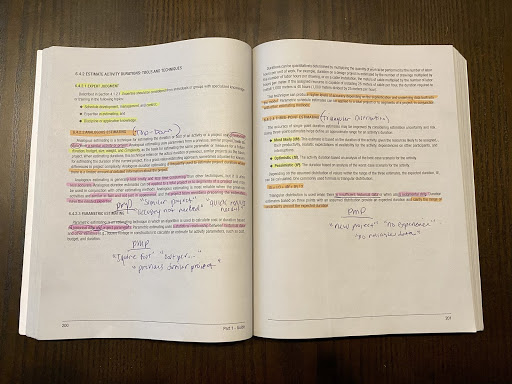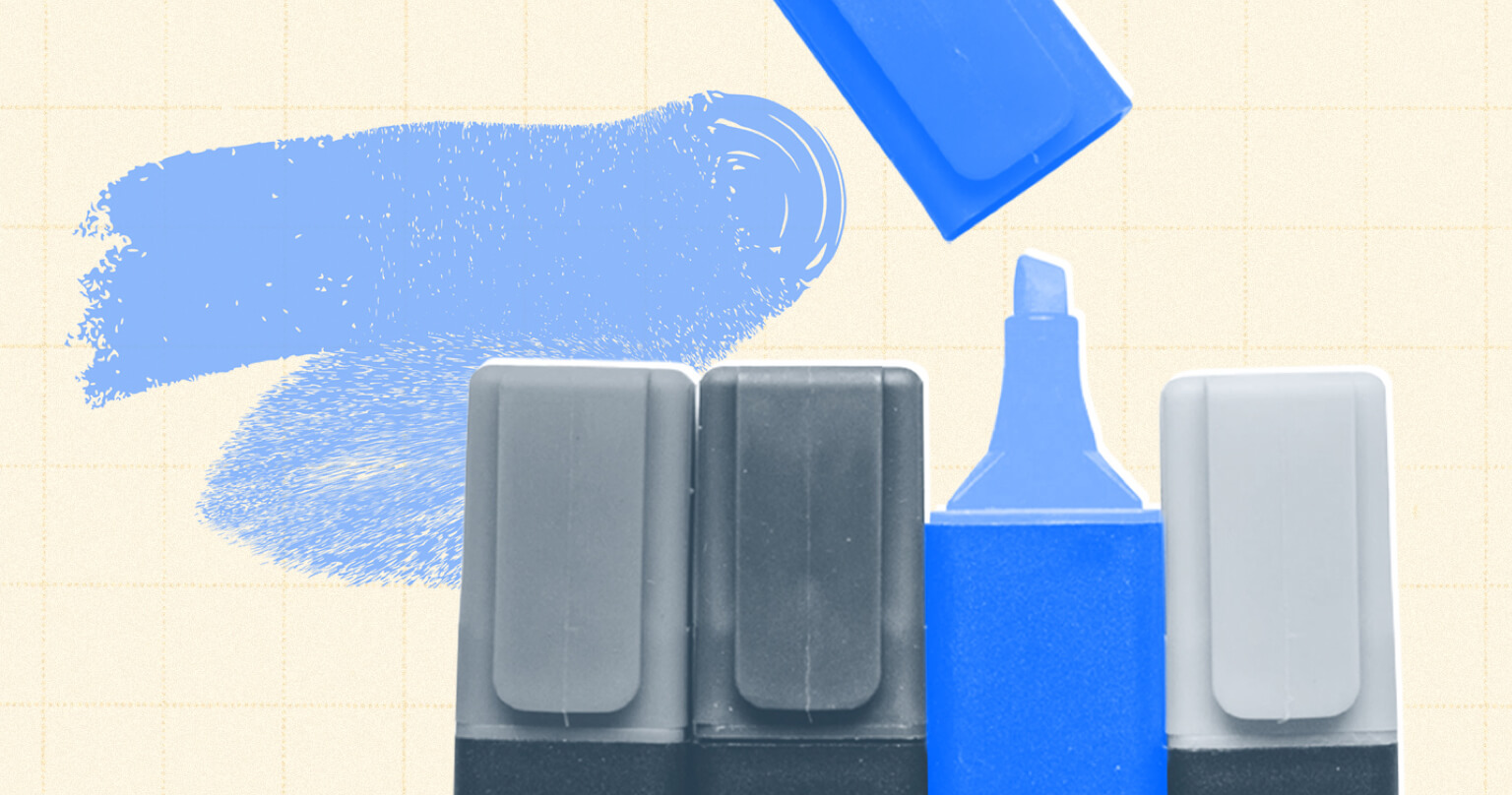Gone are the 90s when our neon trimmed jackets and neon splashed carpets matched the same bright shades of our highlighters and gelly roll pens. Our light-up sneakers and Lisa Frank notebooks were replaced by minimalistic chic; monochrome tones simplifying our style as much as they silenced celebrated displays of gaudiness.
When a presidential inauguration invites headlines about the esteem of monochrome tones, it’s clear that we have a very different relationship with colors in the 21st century.
Nonetheless, the nostalgia and love of neon colors surfaces in our modern era, often associated with the joy of sliding vibrant colors across an otherwise plain sheet of white paper in lines as crisp as the crunch of 3D Nacho Cheese Doritos (R.I.P.).
Sadly, it’s not the 90s anymore. That means neon shades and sparkles are out, and minimalism is in.
Therefore, if your textbook looks like this ⬇️, we need to have a talk.

Our Accidental Toxic Relationship With Highlighters
“But I feel like I’m only highlighting the important parts, and this is helping me memorize that information!”
Unfortunately, popular assumptions about highlighting being an effective memorization tool have gotten a bit out of control.
Highlighting has slowly turned into an aesthetic flex by college students and influencers who are turning their study game into a sharable art form.
Searching for #studyblr on Instagram or Tumblr will result in thousands of photos of vibrant, crisp neon stripes strewn across the lines of perfectly framed books and notepads.
View this post on Instagram
Trying to pick the perfect arrangement of colors can quickly turn into an all-day project of online searching and shopping, distracting us from the actual truth of the matter:
We have a highlighter addiction problem.
How Highlighters Became a Staple for Study
“Before the rise of the highlighter, attentive readers relied on a combination of underlining and marginal notes,” said Dennis Baron, a University of Illinois professor in an interview with the New York Times on the highlighter craze that started in the 1960s.
It was a Japanese inventor named Yukio Horie who first invented a felt-tip pen that used water-based ink in 1962. This evolved to become the highlighters that we know today with the first commercially available highlighter – called a Hi-Liter – sold by Carter’s Ink Company in 1963.
Switching from a mundane pencil or pen for underlining notes to a vibrant yellow or orange marker allowed readers to highlight with vigor, colorizing the black and white pages they had been so accustomed to while studying or reading.
Fast forward to today, highlighters are practically expected for any student to have. Some teachers and instructors even require them for their courses. Academics welcome the use of highlighters, and a guide on how to use highlighters effectively by the Dunwoody College of Technology explains how exactly they are intended to be used.
“The purpose of highlighting is to draw attention to important information in a text. Effective highlighting is effective because it first asks the reader to pick out the important parts, and then gives an effective way to review that information later. What those important parts exactly are is directly related to what the reader is reading for.”
Highlighter Fact vs. Fiction
For all its benefits and study enhancement qualities, highlighters can also be abused.
Many studies have been done over the years to measure the true memorization efficacy of highlighters with students who rely on them to study.
A study by Rickards, J. P., & August G. J. (1975) asked students to only highlight one sentence per paragraph during their studies. The results found that the students who highlighted just one sentence per paragraph ended up recalling more from the text than students who had only read the text. This restriction had forced students to only highlight what was most important and focus on the most important and main ideas.
Another study by Blanchard and Mikkelson (1987) and L. L. Johnson (1988) found that “subjects who highlighted text while reading performed better on questions related to the information they highlighted, but at a cost of performing worse on questions related to information they did not highlight.”
In conclusion, highlighting can in fact be effective, but only when used properly.
- Too much highlighting = you forget everything because nothing stood out
- Too little highlighting = you forget what you didn’t highlight
- Just the right amount of highlighting = you recall exactly what you intended to
So where do you draw the line in using highlighters effectively?

Here’s How To Use Highlighters Effectively
For starters, it’s important to set expectations around why you’re using a highlighter.
Don’t use a highlighter if:
- You’re planning to use more than 3 colors on one page (ideally no more than 2)
- The fun of splashing colors across the page is distracting you from actually reading the information on the page
- You’re expecting the use of a highlighter to cut down your total study time and/or speed up your reading capacity
- A pen or pencil can do the same job
- You have more highlighters or markers on your desk than reading material
Once you’ve determined that highlighting is indeed a helpful tool for you, use these four specific tips as a guide to ensure that your use of a highlighter is meaningful:
1. You should be able to read only the highlighted words and the words will make sense.
This means when you go back and skim what you’ve highlighted, you should be able to understand the key takeaway or point from only the highlighted material.
2. Use specific shapes (instead of colors) to indicate particular purposes or importance. For example:
- Circle: An important concept to understand, an ‘“ah-ha!” moment
- Box: Something covered in class or flagged by the teacher
- Wavy Line: A supporting example
- Star: Come back to this right before the exam to refresh your memory
3. Read the whole paragraph first before you decide what to highlight.
4. Use a regular pen or pencil to make notes in the margins.
Writing something yourself and in your own handwriting has proven benefits when it comes to memory recall. Plus, you can add your own commentary and translation of what you’re reading, further contributing to building deeper memorization and connections in your brain.
Breaking Away from the Highlighter High
We get it, highlighting is fun! And colors are powerful stimuli for our brains. They allow us to digest and remember information more easily, and they can even help build our photographic memories. It’s when our books or textbooks begin to look a bit more like coloring books that this fun and interesting method can quickly turn into a distracting hobby.

 learning science
learning science